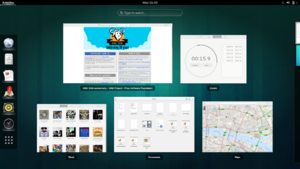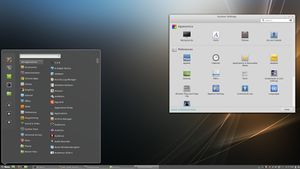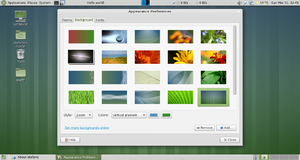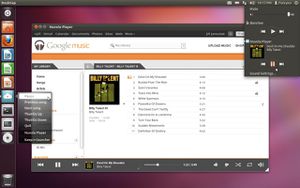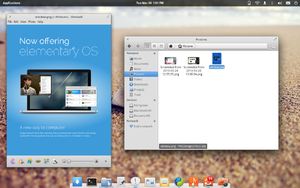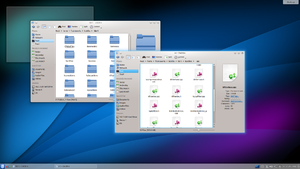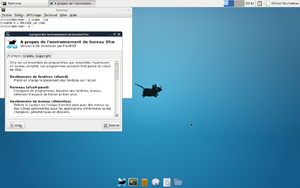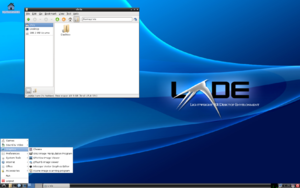We are still actively working on the spam issue.
Choosing a Distro
Page status: outline
To-do: Flesh out descriptions and shit, add photos of DEs
Before researching and choosing the right distrobution for you, you must have in mind what you want to use it for. Facebook machine? Programming? Gaming? A secondary consideration is hardware. Linux generally tends to play well with underpowered or aging computers, but you may want to try lighter distros.
These are the things you want to compare when distro shopping:
1. Availability of hardware support
2. Availability of community support
3. Distro quirks
4. Desktop environment or window managers
5. Application library
Contents
Distribution Families
For more information, visit each distro's homepage, Wikipedia, and DistroWatch.
Debian
A community-developed distro focused on stability. Has the biggest user base if you include distros based on it. Comes in various releases with different tradeoffs of stability/up-to-datedness. More or less the most important distro.
Artistix
Formerly Medialinux: Ubuntu-based bootable DVD containing many free multimedia software packages for audio, 2D and 3D graphics, and video production. The goal of this project is to showcase the variety of multimedia software available on the GNU/Linux platform and to enable creative individuals to accomplish their tasks with the help of Free Software.
Crunchbang
Takes Debian Stable and rices it for you. Openbox, Tint2, the works. Comes with drivers. Uses stable and backport Debian repos.
elementaryOS
Takes Ubuntu and makes it look like OS X by developing the Pantheon desktop environment and in-house programs. Uses Ubuntu repos.
gNewSense
A product sponsored by the Free Software Foundation, gNewSense is based on Debian Stable and is released without any proprietary and non-free components, and several "enhancements". Notably, all proprietary firmware, restricted modules and Debian logos are removed. The goal of the project is to produce a totally free ("libre") Linux distribution. Prepare to cry when no drivers are available for your 1337 gamin' rig.
Kali
Formerly known as Backtrack and is based on Debian Testing. Comes pre-loaded with "network security testing" tools. A real must-have for skiddies and those who are poor enough to need to "borrow" wifi and can't download the tools themselves.
Mint
Takes Ubuntu, removes spyware, adds proprietary shit like Flash right in the iso. Developed the MATE and Cinnamon desktop environments. Uses Ubuntu repos.
SteamOS
Based on Debian Stable. It's designed to run Valve's Steam and Steam games. It comes with GNOME and features various third-party drivers and updated graphics stack. Also has a long-term support kernel and a custom graphics compositor designed to provide a seamless transition between Steam, its games, and the SteamOS system overlay. The base operating system is open-source software, but the Steam client is proprietary.
Ubuntu
Takes Debian Testing, makes sure its packages are usable, adds drivers, adds handholding, and adds spyware. Not to fear, it's easily removable ([fixubuntu.com]). Comes with Unity by default. Repo is supplemented with user-maintained PPAs, so if it's available for Linux you can probably find it here. The most popular desktop distro with the most guides and solutions on various forums.
Developed by Canonical, the evil empire of the free software world.
Fedora
Developed by Red Hat, probably the biggest corporate backer of GNU/Linux, as a testing bed for its commercial RHEL distro. Bleeding edge; usually the first widely-used distro to start shipping with new developments such as Wayland. However, the distro is released on a versioned/milestone-based model, which means you generally have to wait until the next distro upgrade in order to gain access to major updates such as new versions of your desktop environment. In general, upgrading the distro is not a stable process; formatting the partition and installing the new version over the old one is the preferred method because it prevents conflicts.
For those who want rolling release, constant updates and bleeding edge software, Arch Linux might be a better choice.
Arch Linux
A community-developed distro focused on simplicity and vanilla-ness of its underlying parts. No hand-holding or preconfigured defaults; setting up the system is left to the user. Great for learning how a GNU/Linux system comes together. Repositories hold bleeding edge packages.
It is a rolling release distro, which means that all packages are updated continuously with no need to reinstall anything. Occasionally, things might change in a way that makes updated packages incompatible with the installed system. Whenever possible, the installation scripts will automatically reconfigure everything, but it will not undo anything you have done: they won't overwrite configuration files that you have modified, for one. In these cases, it will be necessary to manually reconfigure the system and bring it to a consistent state.
This sole characteristic made Arch Linux a distro infamous for being unstable. In reality, all packages are the latest stable versions as released from the developers themselves. No unstable packages are ever used unless you explicitly enable the [testing] repositories. When you actually do have to do some system administration work, most of the time they are simple cases of merging configuration files. Whenever something more complicated is required, a notice is usually posted on the news section of the Arch Linux website to warn people about the changes, complete with instructions about how to fix things and bring the system to a stable state again. This usually happens when things get deprecated or replaced; not that often.
Manjaro
Takes Arch, preconfigures everything, and gives it an easy graphical installer. Also maintains its own repository of more stable packages in addition to the Arch repositories.
OpenSUSE
Developed by Novell as a testing bed for its commercial SUSE distro. Best implementation of KDE, and great GNOME integration. Has a well-regarded integrated configuration tool called YaST.
Gentoo
Install it. A hand holding-less distro, has to compiled by the installer pre-use.
- Unconfirmed reports of granting magic powers: i.e the ability to roll turds into gold, vibrate through walls, etc
Slackware
Formerly known as SLS (Soft-landing Linux System) and quite possibly the oldest distro in the books.
Made for the purist at heart.
Other
Nothing here suit your fancy? Check out DistroWatch and browse around for something pretty.
Desktop Environments
GNOME 3
Cinnamon - Mint
MATE (Gnome 2) - Mint
Pantheon - Elementary
XFCE
LXDE
Window Managers
Window managers (WMs) are X clients that provide the border around a window. The window manager controls the appearance of an application and how it is managed: typically the border, titlebar, size, and ability to resize a window are handled by a wm. Many window managers provide other functionality such as places to stick dockapps, menus to configure the WM and other useful things.
Window managers generally do not provide extras like desktop icons, which are commonly seen in desktop environments (though it is possible to add icons in a WM with another program).
Because of the lack of extras, WMs are much lighter on system resources.
Types
1. Stacking (aka floating)
- Provides the traditional desktop metaphor used in commercial operating systems like Windows and OS X. Windows act like pieces of paper on a desk, and can be stacked on top of each other.
2. Tiling
- These "tile" the windows side-by-side so that none are overlapping. They usually make very extensive use of key-bindings and have less (or no) reliance on the mouse. Tiling window managers may be manual, offer predefined layouts, or both.
3. Dynamic
- A type that can dynamically switch between tiling or floating window layout.
Considered /g/ood:
(The WMs listed below are the most common found in /g/ ricing threads. Go ahead and set one up with as all the smugness and Chinese cartoon girls your heart can muster.)
